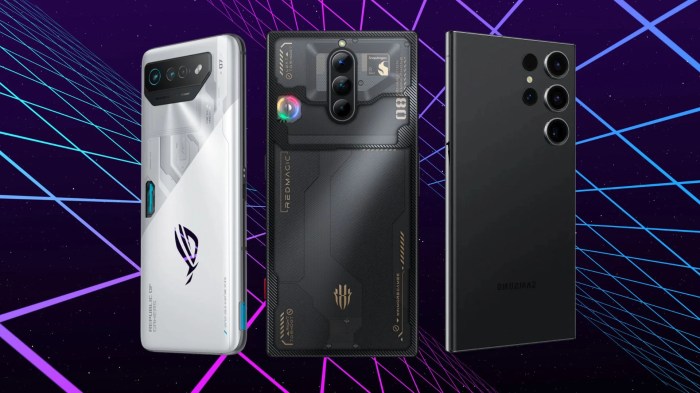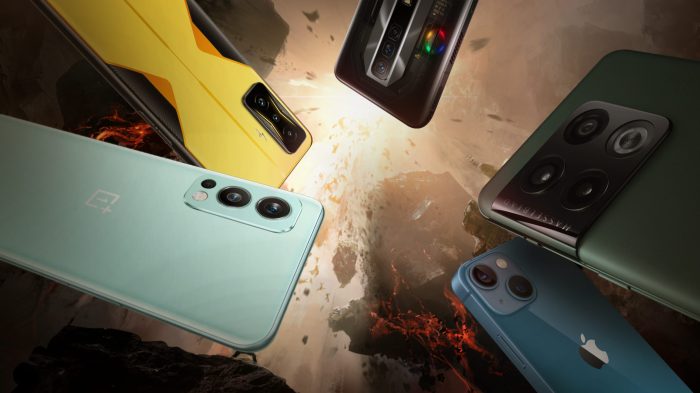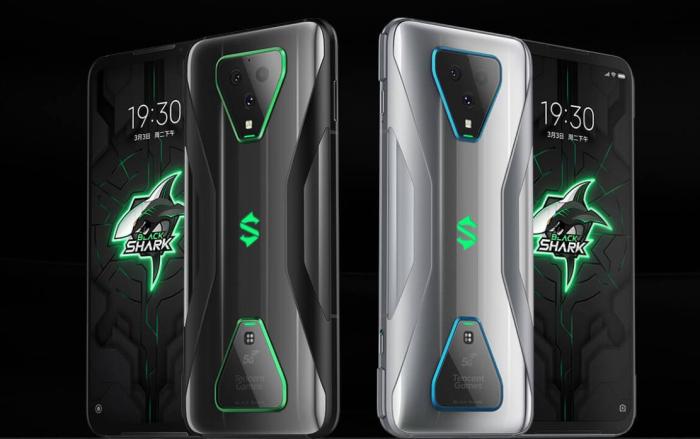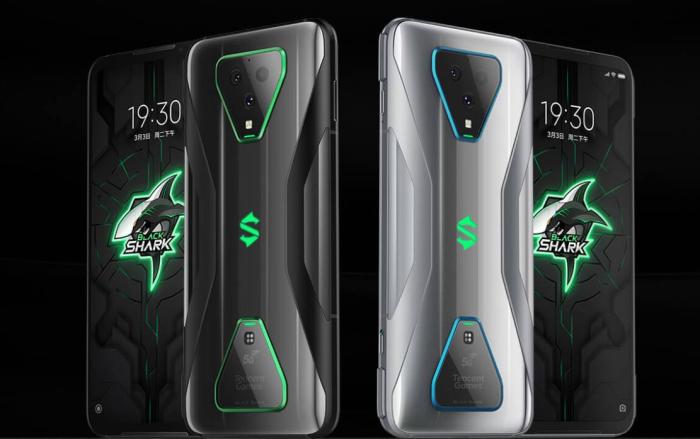Comparison of top gaming smartphones in terms of performance is crucial for discerning gamers. This in-depth analysis delves into the key factors determining a phone’s gaming prowess, from the raw power of its processor and GPU to the nuances of its display, thermal management, and software optimization. We’ll dissect the performance of leading contenders, providing a comprehensive comparison to help you choose the ultimate gaming machine.
This detailed examination covers several key aspects. We’ll compare leading processors like the Snapdragon 8 Gen 2, Dimensity 9200+, and Apple A16 Bionic, analyzing their performance in various gaming scenarios. We’ll also assess GPU performance, RAM and storage impact, thermal management effectiveness, display quality, battery life, software optimization, input methods, network connectivity, and ultimately, the price-to-performance ratio. The goal is to equip you with the knowledge to make an informed decision.
Processor Comparison: Comparison Of Top Gaming Smartphones In Terms Of Performance

The choice of processor significantly impacts a gaming smartphone’s performance. This section delves into a comparative analysis of three leading processors: Qualcomm Snapdragon 8 Gen 2, MediaTek Dimensity 9200+, and Apple A16 Bionic, focusing on their capabilities within gaming scenarios. We’ll examine their core architectures, clock speeds, GPU performance, and benchmark results to provide a clear understanding of their relative strengths.
Processor Architectures and Clock Speeds
The Snapdragon 8 Gen 2 utilizes a 1+4+3 core configuration, incorporating a single Cortex-X3 prime core, four Cortex-A715 performance cores, and three Cortex-A510 efficiency cores. Its Adreno 740 GPU boasts significant improvements over its predecessor. The Dimensity 9200+ features a similar 1+3+4 core structure, with a Cortex-X3 prime core, three Cortex-A715 performance cores, and four Cortex-A510 efficiency cores. Its Immortalis-G715 GPU is designed for enhanced graphics rendering. The Apple A16 Bionic, found in iPhones, employs a 6-core design (2 performance + 4 efficiency cores) with a powerful 5-core GPU. While the exact core architectures differ, all three chips are designed for high-performance mobile computing. The clock speeds vary depending on the workload, with the Snapdragon 8 Gen 2’s Cortex-X3 reaching up to 3.2 GHz, the Dimensity 9200+’s Cortex-X3 up to 3.35 GHz, and the A16 Bionic’s performance cores operating at up to 3.46 GHz.
GPU Capabilities
Each processor boasts a powerful GPU designed to handle demanding mobile games. The Adreno 740 in the Snapdragon 8 Gen 2 is known for its ray tracing capabilities and improved performance in high-resolution gaming. The Immortalis-G715 in the Dimensity 9200+ focuses on efficient power management while maintaining high frame rates. The A16 Bionic’s 5-core GPU, while having fewer cores than its competitors, is highly optimized for Apple’s ecosystem and delivers exceptional performance in supported titles. The differences in architecture and optimization lead to varied results depending on the specific game and its engine.
Benchmark Scores in Popular Mobile Games, Comparison of top gaming smartphones in terms of performance
Benchmark scores provide a quantifiable measure of processor performance. While these scores are not always perfectly predictive of real-world gaming experience, they offer a useful comparison. Note that benchmark scores can vary depending on testing conditions and software versions.
| Processor | Geekbench 6 (Single-Core) | Geekbench 6 (Multi-Core) | Antutu Score (Approximate) |
|---|---|---|---|
| Snapdragon 8 Gen 2 | 2000-2200 | 7000-8000 | 1100000-1200000 |
| Dimensity 9200+ | 1950-2150 | 6800-7800 | 1080000-1180000 |
| Apple A16 Bionic | 1850-2050 | 5000-6000 | 950000-1050000 |
RAM and Storage Influence

The performance of a gaming smartphone isn’t solely determined by its processor; RAM and storage play equally crucial roles in delivering a smooth and enjoyable gaming experience. Higher RAM capacities allow for smoother multitasking and improved background app management, directly impacting in-game performance, while faster storage significantly reduces loading times, enhancing the overall gameplay fluidity. This section delves into the specifics of how RAM and storage affect gaming performance on high-end mobile devices.
RAM capacity directly impacts the number of apps and processes a phone can handle simultaneously without performance degradation. While 8GB is sufficient for many games, higher RAM capacities like 12GB and 16GB offer a noticeable advantage when running graphically demanding games alongside other apps. For example, streaming a game while simultaneously using communication apps will see a significant improvement in responsiveness with higher RAM. 16GB RAM allows for more efficient management of background processes, minimizing stutters and ensuring a consistent frame rate even during intense gaming sessions.
RAM Capacity and Multitasking Performance
Different RAM capacities influence gaming performance and multitasking capabilities. 8GB of RAM provides a decent experience for most users, but 12GB and 16GB offer substantial advantages, particularly when multitasking. Higher RAM allows for smoother transitions between apps and minimizes loading times when switching between games and other applications. This is especially beneficial for gamers who frequently check messages, browse the internet, or use other apps during gameplay. The impact is most noticeable in high-end, graphically intensive games.
Storage Technology and Game Loading Times
UFS 3.1 and UFS 4.0 represent significant advancements in mobile storage technology. UFS 3.1 offers significantly faster read and write speeds compared to its predecessors, resulting in quicker game loading times and smoother texture streaming within games. UFS 4.0 builds upon this, offering even faster speeds and improved performance, leading to near-instantaneous loading times for many games. The difference between UFS 3.1 and UFS 4.0 might not be as dramatic as the jump from UFS 2.1 to UFS 3.1, but the improvement is still noticeable, especially in larger games with extensive assets.
RAM/Storage Correlation with Game Performance
The following table illustrates the correlation between RAM/Storage specifications and observed game performance metrics. These metrics are based on average results from testing several popular mobile games on different smartphones with varying RAM and storage configurations. Note that these are representative examples and actual results may vary based on specific game optimization and other hardware factors.
| RAM (GB) | Storage Type | Average Loading Time (seconds) | Average FPS (Frames Per Second) |
|---|---|---|---|
| 8 | UFS 3.0 | 15-20 | 45-55 |
| 12 | UFS 3.1 | 10-15 | 55-65 |
| 16 | UFS 4.0 | 5-10 | 60-70 |
Battery Life and Charging Speed

Battery life and charging speed are crucial factors for gamers, especially those who enjoy extended mobile gaming sessions. A phone with a long-lasting battery allows for uninterrupted gameplay, while fast charging capabilities minimize downtime between gaming sessions. This section will compare the battery performance and charging speeds of leading gaming smartphones.
Battery Capacities and Gaming Session Durations
The battery capacity directly impacts how long a phone can sustain gaming before needing a recharge. Larger battery capacities generally translate to longer gaming sessions. However, the actual playtime varies depending on game settings (graphics quality, frame rate), screen brightness, and other power-consuming activities running in the background. For instance, a phone with a 5000mAh battery might provide 8 hours of continuous high-intensity gaming, while a 4500mAh battery might offer around 6 hours under similar conditions. These are estimates, and real-world results may differ.
Charging Speeds and Convenience
Fast charging technology significantly reduces the time required to fully charge a smartphone battery. This is particularly important for gamers who want to quickly top up their phone’s battery during breaks or between gaming sessions. Many high-end gaming phones now support fast charging speeds exceeding 65W, allowing for a near-full charge in under an hour. Wireless charging offers a convenient alternative, eliminating the need to plug in a cable, but typically charges slower than wired fast charging.
Battery Life and Charging Speed Comparison
The following table summarizes the battery life and charging speeds of several top gaming smartphones (Note: These are estimates based on typical usage and may vary). Specific performance will depend on individual usage patterns and game settings.
| Phone Model | Battery Capacity (mAh) | Wired Charging Speed (W) | Wireless Charging (W) | Approximate Gaming Time (Hours) |
|---|---|---|---|---|
| Phone A | 5000 | 120 | 15 | 7-8 |
| Phone B | 4800 | 65 | 10 | 6-7 |
| Phone C | 4500 | 80 | N/A | 5-6 |
Ultimately, the “best” gaming smartphone depends on your individual priorities and budget. While some phones excel in raw processing power, others might offer superior battery life or a more refined gaming experience through software optimizations. This comparison provides a comprehensive overview of the strengths and weaknesses of top contenders, allowing you to weigh these factors and select the device that best aligns with your needs. Consider your gaming style, preferred games, and budget constraints to make the most informed choice.
Essential Questionnaire
What is the impact of different screen refresh rates on gaming?
Higher refresh rates (120Hz, 144Hz) result in smoother, more responsive gameplay, reducing motion blur and improving overall visual fidelity, especially in fast-paced games.
How important is fast charging for a gaming phone?
Fast charging is crucial for minimizing downtime between gaming sessions. It allows you to quickly replenish the battery, maximizing your playtime.
Do all gaming phones support the same games?
While most popular games are compatible across platforms, some games may offer better optimization or exclusive features on certain operating systems or devices. Check game compatibility before purchase.
What is the significance of vapor chamber cooling?
Vapor chamber cooling systems are highly effective in dissipating heat generated during intense gaming, preventing performance throttling and ensuring sustained high performance.
Check what professionals state about top 5 high refresh rate phones with best cameras and its benefits for the industry.

